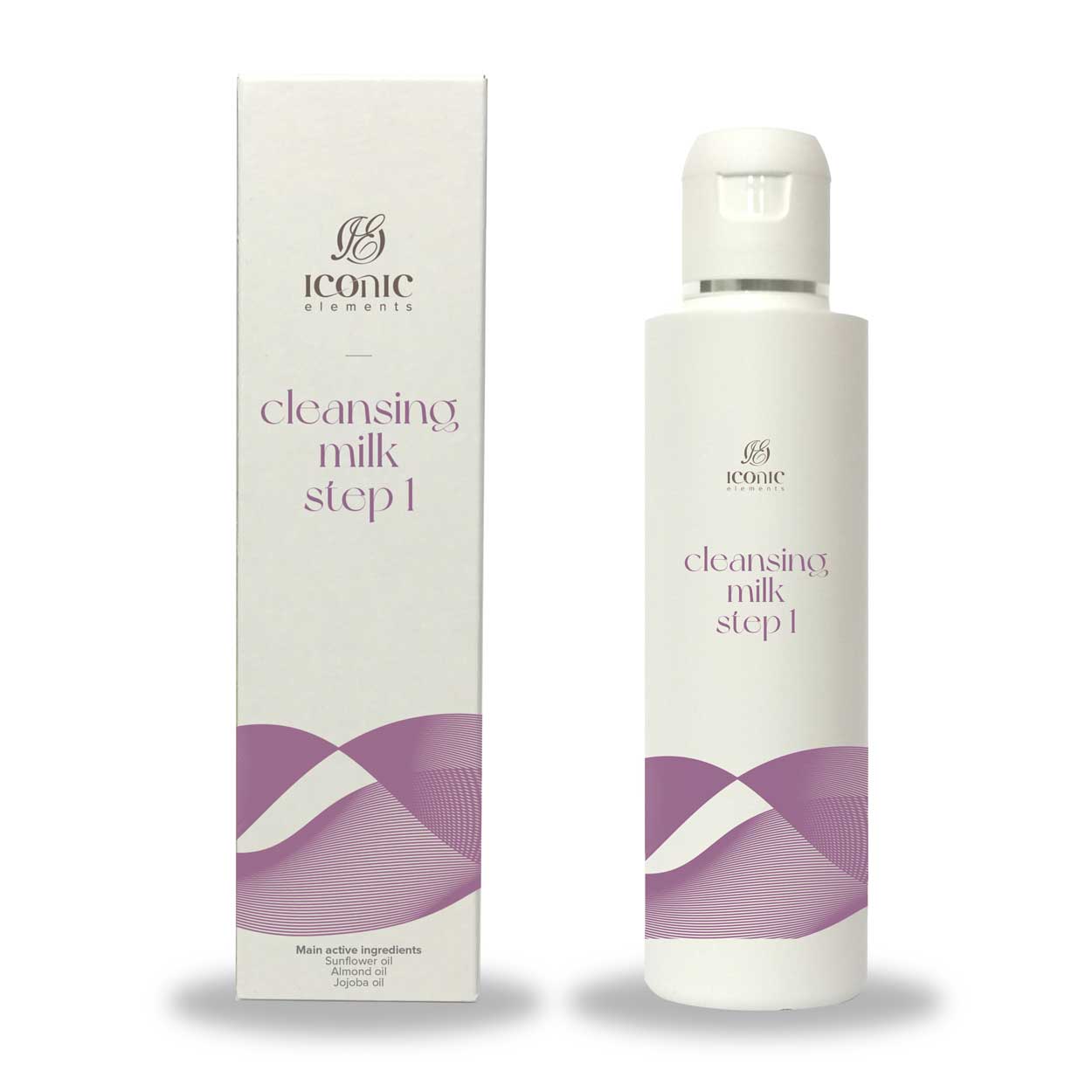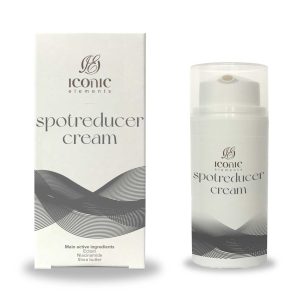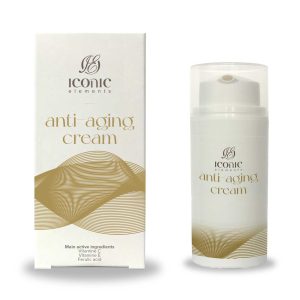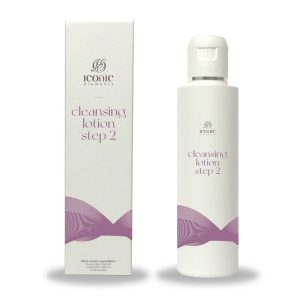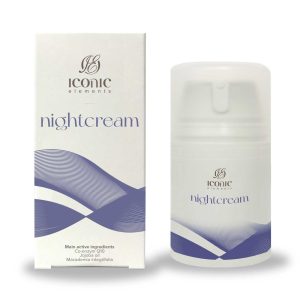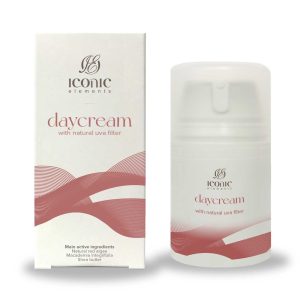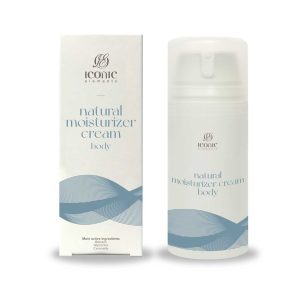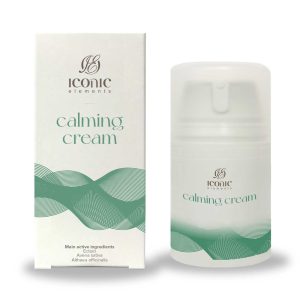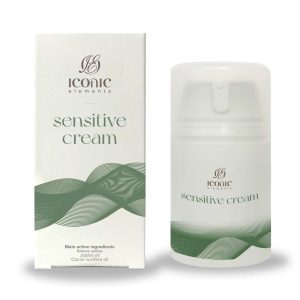Cleansing milk Step 1
Our Cleansing Milk Step 1 is a gentle and mild cleanser. It removes cosmetics and cleanses the skin in one simple step. The Cleansing Milk contains a combination of different oils including sunflower (Helianthus Annuus) and almond (Prunus Amygdalus Dulcis) to remove skin impurities and cosmetics. Aloe vera provides soothing and hydration to the skin. Does not contain alcohol
Review: beautyjournaalpanel Januari 2018. Skin therapist experience Sylvana van AmerongenApril 2018, skintherapistNaomi
The Cleansing Milk also supports the treatment for acne. For more information about acne, see the following links:
14,95
Cleansing milk Step 1 active ingredients:
Sunflower oil
This component is rich in essential fatty acids and has similarities to the lipid (fat) content in human skin. It helps prevent moisture loss and helps maintain skin barrier function.
Jojoba oil
Also called Simmondsia chinensis. Native Americans originally used jojoba oil for skin care and to treat open spots. Because of its enormous skin friendliness, it is often used for people with sensitive & troubled skin. More about Jojoba oil
Almond oil
Almond oil is an integral part of any skin care regimen. It contains high concentrations of insaturable oleic acid, which helps retain moisture in the skin. In addition, almond oil contains vitamins A, B and especially a high concentration of vitamin E which helps maintain the integrity of the skin barrier, protecting against photo-oxidative stress.
Aloe vera extract
Described by the ancient Egyptians as the ‘plant of immortality’, aloe vera extract is one of the world’s most important ingredients for treating irritated skin. Famous for its medicinal, antibacterial and moisturizing properties, the aloe vera extract soothes and calms the skin.
INCI
Aqua, Helianthus Annuus Seed Oil*, Glyceryl Stearate, Glycerin, Macadamia Integrifolia Seed Oil*, Simmondsia Chinensis Seed Oil*, Olus Oil, Prunus Amygdalus Dulcis Oil, Cocos Nucifera Oil*, Sodium Stearoyl Glutamate, Butyrospermum Parkii Butter*, Levulinic Acid, P-Anisic Acid, Xanthan Gum, Sodium Levulinate, Ascorbyl Palmitate, Cucumis Sativus Extract, Disodium Cocoyl Glutamate, Sodium Cocoyl Glutamate, Tocopherol, Phytic Acid, Sodium Benzoate, Aloe Barbadensis Leaf Juice Powder*, Potassium Sorbate, Camellia Sinensis Leaf Extract, Citric Acid, Lactic Acid, Daucus Carota Sativa Root Extract*, Rosmarinus Officinalis Leaf Extract*
Does not contain alchohol
*Biological
Conserved with Sodium Benzoate
Content 150 cc
Perfect for: A gentle cleansing milk for your face, impurities on the facial surface, removes various types of make-up, including foundations, mascara, and lipstick. Suitable for all skin types.
What we care about:
![]()
Scientific references
1.Kraft JN & Lynde CW.Moisturizers: What They are and a Practical Approach to Product Selection. Skin Therapy Letter, 2005; 10: 1-8.
2.Darmstadt GL, Badrawi N, Law PA, Ahmed S, Bashir M, Iskander I, Al Said D, El Kholy A, Husein MH, Alam,A, Winch PJ, Gipson R, Santosham M. Topically applied sunflower seed oil prevents invasive bacterial infections in preterm infants in Egypt: a randomized, controlled clinical trial. Pediatr Infect Dis J, 2004; 23: 719-725.
3.Maguire LS, O’Sullivan SM, Galvin K, O’Connor TP, O’Brien NM. Fatty acid profile, tocopherol, squalene and phytosterol content of walnuts, almonds, peanuts, hazelnuts and the macadamia nut. Int J Food Sci Nutr. 2004;55:171-8.
4. Tanojo H, Boelsma E, Junginger HE, Ponec M, Boddé HE. In vivo human skin barrier modulation by topical application of fatty acids. Skin Pharmacol Appl Skin Physiol. 1998;11:87-97.
5. Ekanayake-Mudiyanselage S, et. al. Vitamin E delivery to human skin by a rinse-off product: penetration of alpha-tocopherol versus wash- out effects of skin surface lipids. Skin Pharmacol Physiol. 2005;18:20-6.
6Arquette DJ, Bailyn EM, Palenske J, Devorn Bergman D, Rheins LA. Non-comedogenic and hypoallergenic properties of jojoba oil and hydrogenated jojoba oil. J Cosmet Sci. 1998; 49, 377-383
7.Habashy RR, Abdel-Naim AB, Khalifa AE, Al-Azizi MM. Anti-inflammatory effects of jojoba liquid wax in experimental models. Pharmacol Res. 2005;51:95-105.
8.Sandha GK, Swami VK. Jojoba oil as an organic, shelf stable standard oil-phase base for cosmetic industry. Rasayan J Chem. 2009;2: 300-306.
9. Touitou E, Godin B. Skin nonpenetrating sunscreens for cosmetic and pharmaceutical formulations. Clin Dermatol. 2008;26:375-9.
10. Davis RH, Rosenthal KY, Cesario LR, Rouw GA. Processed Aloe vera administered topically inhibits inflammation. J Am Podiatr Med Assoc. 1989;79:395-7.
11. Dal’Belo SE, Gaspar LR, Maia Campos PM. Moisturizing effect of cosmetic formulations containing Aloe vera extract in different concentrations assessed by skin bioengineering techniques. Skin Res Technol. 2006;12:241-6.
12. Tian B, Hua YJ, Ma XQ, Wang GL. Relationship between antibacterial activity of aloe and its anthaquinone compounds. Zhongguo Zhong Yao Za Zhi. 2003;28:1034-7.
13.Dohil MA. Natural ingredients in atopic dermatitis and other inflammatory skin disease. J Drugs Dermatol. 2013;12:s128-32.
14.Wu J. Anti-inflammatory ingredients. J Drugs Dermatol. 2008;7:s13-6.

